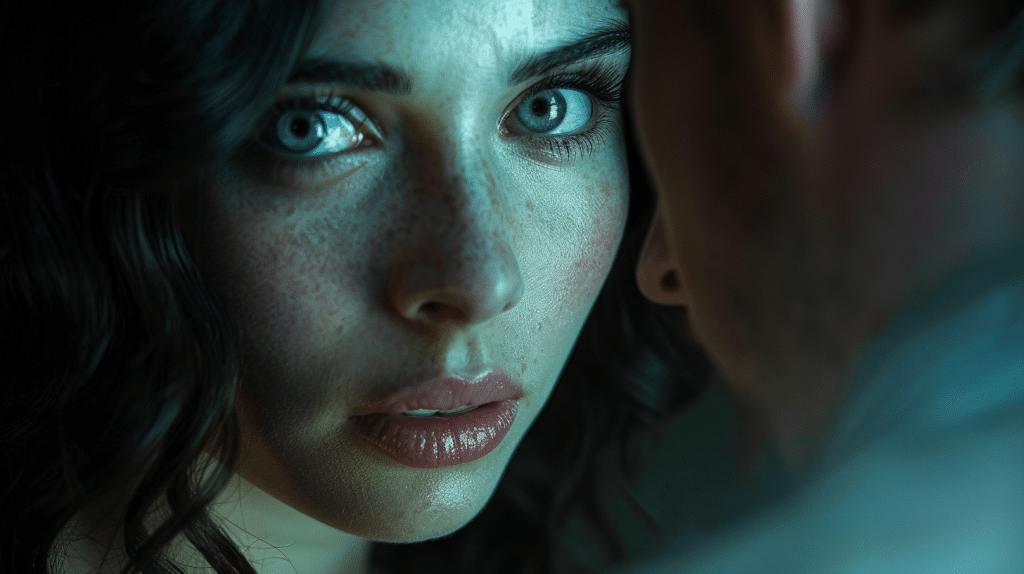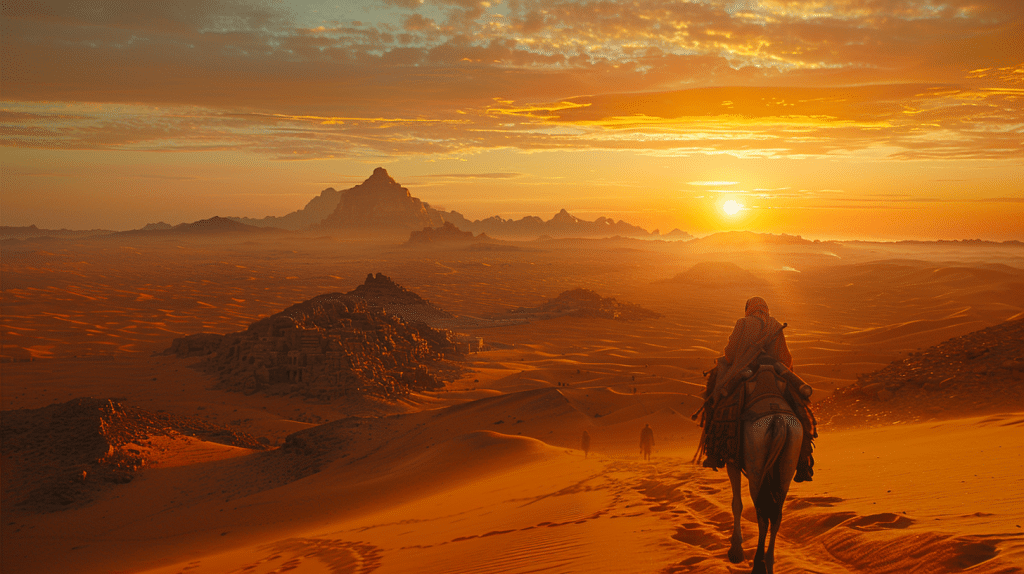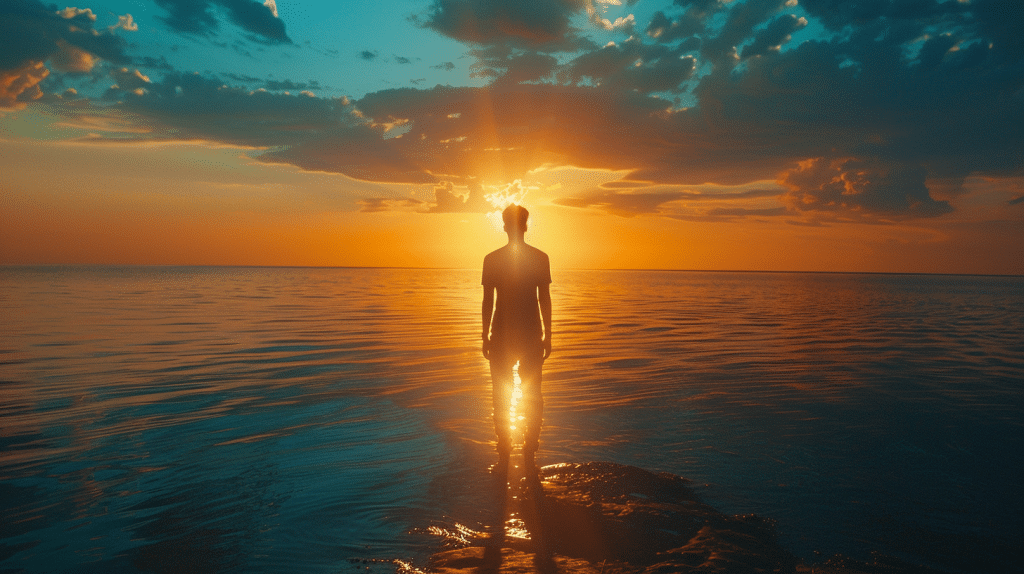Dynamic Storytelling: How to Use Camera Angles to Convey Emotion

You might think camera angles are just technical details, but they’re essential in conveying emotion in film.
When you use high angle shots, you can make a character appear vulnerable, while low angle shots can emphasize their power.
Eye-level shots help create a sense of relatability, and close-ups can draw the audience into a character’s intimate moments.
Wide shots set the grandeur of your scenes, and Dutch angles can introduce tension.
Understanding these techniques can transform your storytelling, making it more dynamic and emotionally engaging.
So, how do you choose the right angle for each scene?
Table of Contents
Importance of Camera Angles
The angle of your camera can transform a mundane scene into a powerful emotional experience, capturing the essence of your story with precision and depth.
By carefully selecting your camera angles, you can direct the viewer’s attention, establish a visual hierarchy, and highlight the character focus in your narrative.
Imagine a low-angle shot, where the camera gazes up at your protagonist, making them appear larger-than-life. This angle doesn’t just elevate their stature but also imbues them with power and significance, intensifying the emotional weight of the moment.
Conversely, a close-up shot can reveal the raw, intimate emotions of a character, drawing the audience into their inner world. The subtle quiver of a lip, the glistening of a tear—these details, captured with technical precision, can convey volumes without a single word spoken.
Each angle you choose crafts a unique perspective, guiding your audience through the layers of your story.
The importance of camera angles lies in their ability to manipulate perception and evoke specific feelings.
By mastering these techniques, you don’t just tell a story; you make your viewers feel it, creating a lasting emotional impact.
High Angle Shots

From a high vantage point, high angle shots diminish the subject’s presence, creating an overwhelming sense of vulnerability and insignificance.
When you position the camera above your character, looking down, it’s as if the weight of the world is pressing upon them. This angle is vital for a vulnerability portrayal, making your audience feel the immense emotional strain the character endures.
Imagine a scene where a child is lost in a bustling city. By using a high angle shot, you highlight the child’s smallness against the vast, indifferent surroundings, intensifying the feeling of character isolation.
The camera’s elevated perspective isolates the subject, visually separating them from their environment, reinforcing their loneliness and helplessness.
Technically, achieving this requires placing your camera on a crane, drone, or even a tall building.
Be sure the frame captures not just the character but also a significant portion of the environment, emphasizing their diminished presence.
The stark contrast between the character and their surroundings is essential to evoke empathy from the audience.
Low Angle Shots

Positioning your camera low to the ground, low angle shots elevate the subject’s stature, creating an imposing and powerful presence that dominates the frame. This technique is pivotal when you want to convey hero dominance or amplify the intimidation factor of a character.
Imagine a protagonist standing tall against a stormy sky; the low angle accentuates their resolve and physical prowess, making them appear larger-than-life.
Technically, a low angle shot involves placing the camera below the character’s eye level, often near the ground, and pointing it upwards. This perspective can make even the most modest figure seem monumental.
The background, usually the sky or towering structures, further enhances the character’s dominance, reinforcing their command over the scene.
Emotionally, these shots evoke a sense of awe or fear. When you look up at someone, it’s instinctive to feel their power over you. In storytelling, this can mark the climax of a hero’s journey or the terrifying presence of an antagonist.
Use this angle sparingly to maintain its impact, transforming ordinary scenes into moments of dramatic tension and unforgettable visual storytelling.
Eye-Level Shots

Imagine looking straight into a character’s eyes, feeling as if you’re sharing the same space and moment. Eye-level shots offer a natural viewer perspective that fosters an emotional connection, making you feel on equal footing with the character.
This angle subtly balances power dynamics, allowing for a more intimate and relatable storytelling experience.
Natural Viewer Perspective
When you frame a shot at eye level, you create a natural and relatable perspective that draws viewers directly into the character’s world. This technique enhances audience immersion by aligning the camera’s viewpoint with the character’s, making the scene feel more authentic.
Imagine a conversation between two people; an eye-level shot places you right there, as if you’re part of the dialogue, absorbing every nuance and emotion.
Technically, positioning the camera at eye level means matching the lens height with the character’s eyes, ensuring that the horizon line cuts through the frame naturally. This perspective eliminates any sense of hierarchy or disparity, making the scene feel balanced and real.
The subtlety of this angle fosters a seamless connection between the audience and the narrative, drawing them deeper into the story without distraction.
Emotionally, eye-level shots humanize characters, allowing viewers to see them as equals and relate to their experiences.
Whether it’s the quiet intensity of a whispered secret or the raw vulnerability of a tear-filled confession, the eye-level perspective magnifies the emotional impact.
Equal Power Dynamics
Frequently employed in storytelling, eye-level shots establish a sense of equal power dynamics by placing the audience on the same plane as the characters, fostering a balanced and engaging narrative.
By aligning the camera at the subject’s eye level, you create character balance, making the viewer feel as if they’re part of the scene. This technique eliminates any sense of superiority or inferiority, promoting narrative symmetry and an impartial viewpoint.
Imagine two characters in a heated debate. An eye-level shot guarantees neither appears more dominant.
You capture their expressions, emotions, and reactions with technical precision, emphasizing equality in their interaction. The result is a scene that feels fair and balanced, encouraging the audience to see both sides of the story without bias.
In scenes of mutual respect or camaraderie, eye-level shots convey an unspoken connection.
For instance, when friends share a heartfelt conversation, this angle underscores their equal standing and mutual understanding. It’s an emotionally evocative method to highlight the subtleties of human interaction, ensuring the audience feels both engaged and empathetic.
Emotional Connection Establishment
An eye-level shot allows you to forge an emotional connection between the audience and characters by capturing raw, unfiltered expressions and reactions.
When you position the camera at the character’s eye level, you create a sense of equality and familiarity. This perspective brings viewers into the character’s world, making them feel like they’re part of the narrative.
Using eye-level shots effectively enhances character development.
By presenting characters in a relatable and humanized manner, you enable the audience to see their vulnerabilities and strengths. This technique helps you build a deeper emotional bond between the viewer and the character, ensuring that the audience is invested in their journey.
Moreover, eye-level shots are pivotal for story immersion. They eliminate the barriers between the screen and the viewer, allowing for a seamless, engaging experience.
Every nuance of the character’s facial expressions is visible, from subtle smiles to tear-filled eyes. This transparency invites the audience to feel the character’s emotions firsthand, making the story more compelling.
Close-Up Shots

Close-up shots draw viewers into a character’s intimate emotions, capturing every subtle nuance of their expressions with striking detail.
When you frame a character closely, you reveal the tiniest twitch of an eyebrow, the quiver of a lip, or the glint of a tear. This powerful intimacy portrayal allows the audience to experience what the character feels in real-time, creating a profound connection.
Technically, you should position the camera at eye level to maximize the emotional impact.
This alignment guarantees that the audience looks directly into the character’s eyes, making the exchange deeply personal. Pay attention to the lighting; soft, diffused lights can highlight facial expressions without harsh shadows that might distract from the emotion.
Use a shallow depth of field to keep the focus on the character’s face, blurring out the background and eliminating distractions. This technique reinforces the viewer’s attention on the emotions displayed, amplifying their effect.
For intense scenes, you can gradually zoom in to heighten tension, making the audience feel like they’re drawn into the character’s emotional world.
Close-up shots, when used deliberately, transform simple facial expressions into a compelling narrative device, making your storytelling both dynamic and profoundly human.
Wide Shots

Wide shots immerse viewers in the broader context of a scene, capturing the environment and spatial relationships between characters to evoke a sense of scale and atmosphere.
When you use wide shots, you’re not just showing where the action takes place; you’re creating a vivid, cinematic landscape that sets the tone and mood. The vastness of a desert, the bustle of a cityscape, or the tranquility of a forest—all of these can be conveyed through a well-composed wide shot, establishing context that enhances the narrative.
To achieve this, position your camera to include as much of the scene as possible.
Pay attention to the rule of thirds to balance your composition and guide the viewer’s eye. Wide shots are perfect for introducing new settings or shifting between scenes, providing a ‘big picture’ that anchors the storyline.
Moreover, wide shots can amplify emotional tones. A solitary figure in an expansive landscape can evoke feelings of isolation or freedom, depending on the story.
By carefully choosing your wide shots, you can control how viewers perceive the emotional undertones of each scene, making your storytelling more dynamic and impactful.
Dutch Angle Shots

When you tilt the camera to create a Dutch angle shot, you instantly throw your audience off balance, evoking unease and tension.
This canted framing distorts the scene, making it feel unnatural and enhancing psychological disorientation.
Your viewers will subconsciously sense that something is wrong, heightening their emotional engagement with the story.
Creating Unease and Tension
A Dutch angle shot, with its tilted horizon and skewed perspective, instantly throws viewers off balance, creating a palpable sense of unease and tension.
Imagine the camera tilting just enough to make the world feel slightly off-kilter. This visual disorientation can be amplified by integrating other cinematic elements like lighting techniques and sound design.
For instance, harsh, angular shadows can enhance the unsettling atmosphere, while an eerie, discordant soundtrack heightens the emotional impact.
To effectively use Dutch angle shots, consider these key elements:
- Lighting: Utilize stark contrasts and shadows to deepen the sense of unease.
- Sound Design: Incorporate unsettling, low-frequency sounds to complement the visual tension.
- Composition: Position your subjects off-center to further disrupt the viewer’s sense of normalcy.
You can see how this technique manipulates the viewer’s emotional state, making them feel as if something is inherently wrong.
The tilted horizon acts as a visual cue, a subconscious signal that the narrative world is unstable.
Enhancing Psychological Disorientation
Mastering the Dutch angle shot empowers you to visually articulate psychological disorientation, creating a scene where every tilt and skew pulls the viewer deeper into the character’s fractured reality.
By incorporating tilted frames, you can make the audience feel the unsettling shift in the world your character inhabits.
Imagine a scene where the horizon line isn’t horizontal but instead slices through the frame diagonally. This off kilter composition immediately signals that something is amiss, stirring a sense of unease.
To achieve this effect, tilt your camera 15 to 45 degrees off its horizontal axis. This shift distorts the viewer’s perception, mimicking the character’s internal turmoil. It’s not just about the angle, but how you integrate it into the narrative.
Use Dutch angles sparingly to avoid overwhelming the audience; their impact is strongest when used in moments of high tension or emotional instability.
Consider a character descending into madness. Each step they take can be captured with increasingly angled shots, amplifying their psychological descent.
The key is balance—too many Dutch angles can desensitize the viewer, but a well-placed tilt can turn a simple scene into a powerful emotional experience.
Frequently Asked Questions

How Do Camera Angles Influence the Audience’s Emotional Response?
Camera angles deeply influence your emotional response by shifting character perspectives and fostering emotional intimacy.
A low angle makes you feel the character’s power, while a high angle can induce vulnerability.
Close-ups draw you into the character’s emotions, creating a personal connection.
Wide shots provide context, evoking a sense of isolation or grandeur.
Each angle crafts a unique emotional landscape, making you feel more connected to the story.
What Are Some Common Mistakes to Avoid With Camera Angles?
Did you know 75% of viewers feel disconnected with awkward compositions? Avoid disorienting cuts that confuse your audience.
Guarantee your camera angles flow seamlessly; abrupt changes can disrupt the emotional journey. Always consider the visual balance and narrative clarity.
Tilted angles might seem creative but can disorient viewers if overused. Keep your shots purposeful to maintain an engaging and immersive experience.
How Can Camera Angles Be Used to Foreshadow Events in a Story?
You can use camera angles to foreshadow events by employing a high angle to make a character appear vulnerable, hinting at impending danger.
A tilt shot subtly distorts the scene, creating a sense of unease and suggesting that something is amiss.
These techniques don’t just tell the audience what’s coming; they make them feel it, building anticipation and emotional depth in your storytelling.
Can Camera Angles Affect the Pacing of a Scene?
Yes, camera angles can definitely affect the pacing of a scene. When you use fast camera movement and quick scene changes, it creates a sense of urgency and excitement.
Conversely, slow pans and long takes can make a scene feel more contemplative and drawn out. Think of a quick zoom to heighten tension or a lingering wide shot to evoke introspection.
These choices shape how the audience emotionally experiences the moment.
How Do Different Genres Utilize Camera Angles Uniquely?
Ever wondered how different genres use camera angles uniquely?
In horror, extreme close-ups highlight fear, while wide shots in sci-fi create vast, otherworldly landscapes.
Genre-specific techniques, like handheld cameras in action films, intensify chaos and excitement.
Romantic dramas often use soft focus to evoke intimacy.
These choices shape the narrative perspective, making you feel part of the story’s emotional journey, whether it’s thrilling, touching, or awe-inspiring.
Putting It All Together

You hold the power to paint emotions on the canvas of the screen.
By choosing the right camera angle, you can make your audience feel like they’re soaring above a character’s vulnerability, standing tall in moments of triumph, or connecting deeply with a soul through a close-up.
Every shot is a brushstroke in your masterpiece, turning technical precision into an emotionally evocative journey.
So, let your lens be the storyteller and create a symphony of visual poetry.
Share:
Search our blog:
Follow us on:
